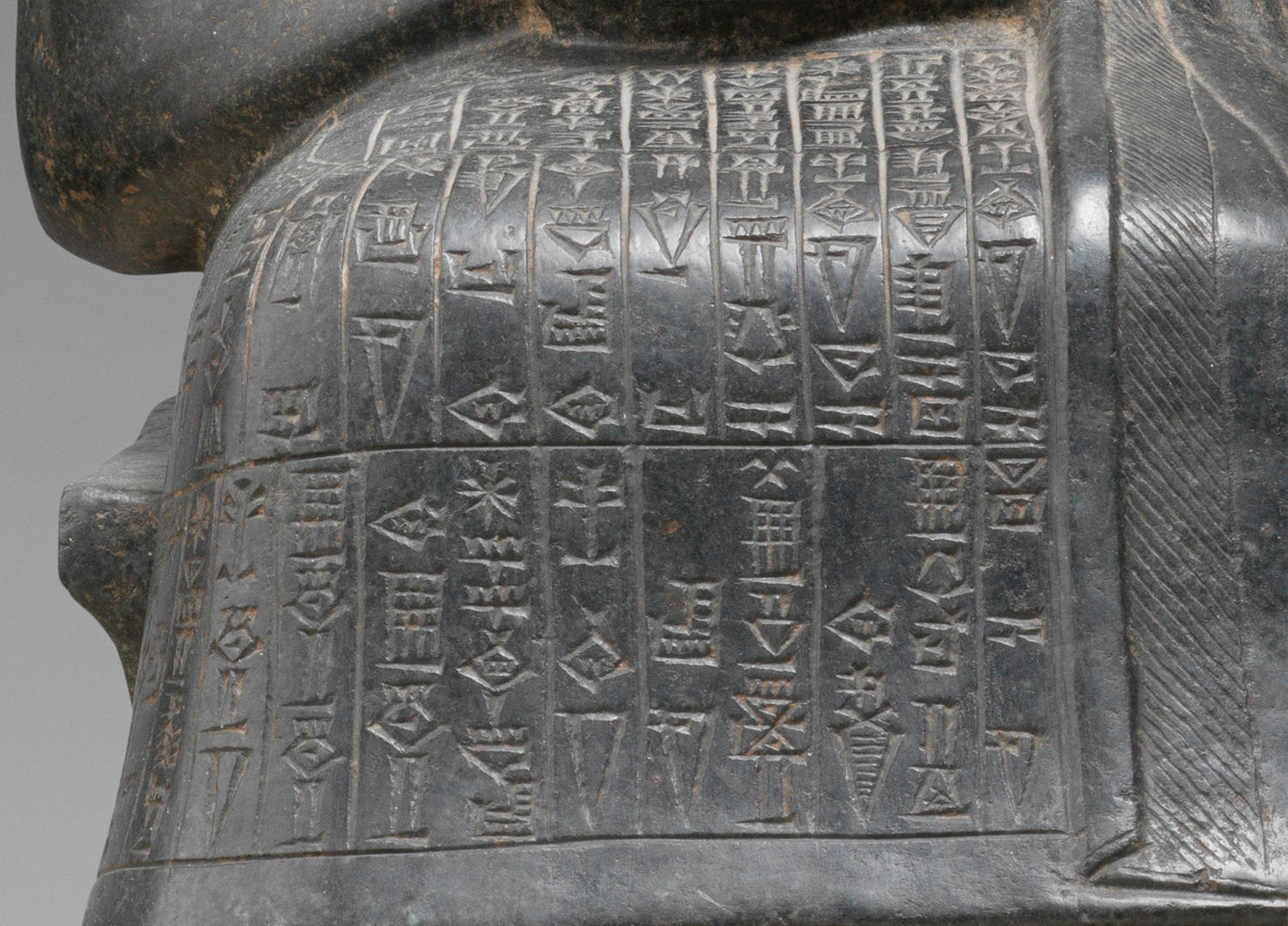Images of Active Enlightenment, from Africa to Asia
From left to right, view of Statue of Gudea (59.2) and Seated Chief (Mwanangana) Playing Sanza (1988.157) as installed in the Galleries for Ancient Near Eastern Art (Gallery 403)
On Wednesday December 1st, 2021, a new guest was welcomed to the center of Gallery 403, on the second floor of the Museum in the galleries for Ancient Near Eastern Art. The nineteenth-century sculpture of a Chokwe chief, or Mwanangana, from Central Africa (1988.157) has been placed next to the ancient stone statue of Gudea (59.2), ruler of the city-state of Lagash in present-day southern Iraq. On an immediate level, the polished dark surfaces of the two sculptures serve to connect them, although the Chokwe sculpture is not of stone but of wood, a material that largely does not survive from ancient Iraq.
Despite their differences, both works share the desire of powerful figures to be remembered in the form of an idealized image. Both sculptures concentrate attention on certain key features in order to emphasize the ruler’s strength and wisdom, creating representations that were meant to manifest the physical presence of an ideal ruler rather than serve as a portrait in the western sense.
Seated Chief (Mwanangana) Playing Sanza, Rogers Fund, 1988 (1988.157)
This pairing, intended to represent “Active Enlightenment,” is one of the first in a series of satellite installations to complement the exhibition The African Origin of Civilization which opened on December 14th, 2021 in Gallery 136 on the Museum’s first floor. In this exhibition, striking works from the African art collection are paired with companion objects from the ancient Egyptian collection while the Michael C. Rockefeller Wing is closed for renovation. More pairings are currently displayed in the permanent galleries of the departments of Greek and Roman Art (Gallery 154), Medieval Art (Gallery 304), Islamic Art (Galleries 455, 457), European Paintings (Gallery 601), The American Wing (Gallery 753) and, The Robert Lehman Collection (Galleries 957, 964).

Detail of Statue of Gudea (59.2), showing cuneiform inscription that reads in part: “Gudea, the man who built the temple, may his life be long.”
This installation was a great opportunity to review the information about the sculptures that appears on gallery labels. To honor the intentions of those who made it, the statue of Gudea has also been identified on the label by its original name, which is carved on the sculpture’s robe, in the cuneiform script used to write the Sumerian language: “Gudea, the man who built the temple, may his life be long.” Contained within the form of the sculpture’s name is its purpose, the preservation of Gudea’s name and memory across time. Four thousand years later, the statue has succeeded in that purpose, albeit in ways Gudea could not have envisaged.
Writing a new label was also an opportunity to give a summary of the ownership history of the sculpture. Most of the time, little information is provided about the provenance of the artworks on display in the permanent galleries. While space constraints on gallery didactics limit how much information can be given, the full sequence of provenance or ownership history is posted on The Met’s Collection Online section of its website. This statue of Gudea appeared on the art market in the 1930s but was probably found at Tello (ancient Girsu) before then, along with other sculptures, such as the Statue of Ur-Ningirsu, son of Gudea (47.100.86). The seated figure of Gudea was offered for sale to the Museum in 1934 by the Parisian dealer Feuardent Frères but was declined. The statue was finally purchased in 1959 from the dealer Elias S. David. Research on provenance is an ongoing and integral part of the Department of Ancient Near Eastern Art’s work. Other recent installations, in Gallery 400 and Gallery 402, have also included ownership history information on their labels.

